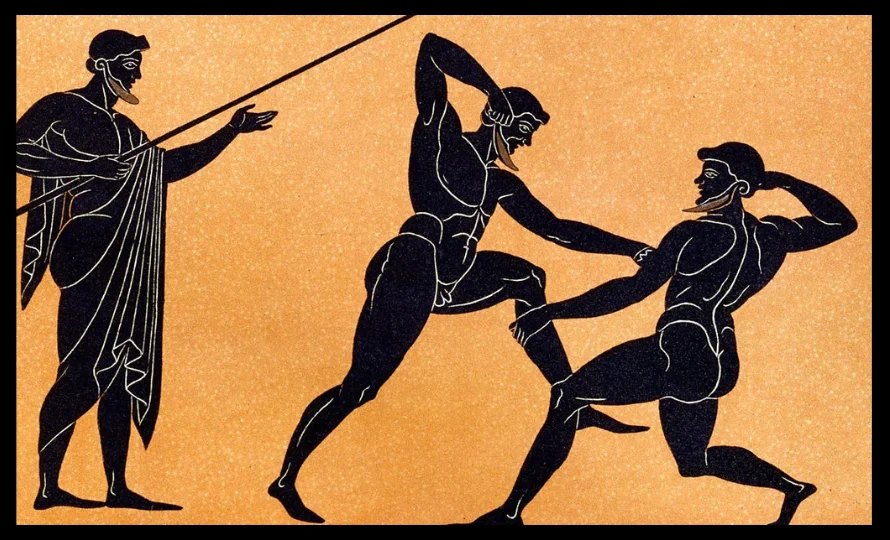Pankration: The forgotten grandfather of all combat sports
Pankration, an ancient blend of boxing and wrestling, was once a brutal Olympic sport. Despite its influence and history, it remains largely unknown to modern audiences.
Pankration was one of the most intense and popular combat sports in ancient Greece, combining elements of wrestling and boxing—but with fewer restrictions, allowing fighters to use punches, kicks, holds, and submissions. Introduced at the 33rd Olympic Games in 648 BC, pankratiasts fought until one opponent either surrendered or was knocked out. The only prohibited moves were eye gouging, biting, and strikes to the groin.
Famous pankratiasts like Polydamas of Skotoussa and Theagenes of Thasos became legendary for their skill and power. Matches had no weight classes or time limits, making the sport both thrilling and extremely dangerous. Fights could last indefinitely until a winner was declared, often leading to serious injuries or even death. Because of the brutal nature, a less intense version for boys was introduced around 200 BC to make the sport safer and more controlled.
In pankration, fighters used a combination of techniques including striking with fists and feet, grappling, joint locks, and chokes to dominate their opponents. This blend of striking and grappling made pankration one of the earliest forms of mixed martial arts.
Pankration was not only a competitive sport but also a valuable fighting technique in warfare. Spartan warriors and Alexander the Great’s soldiers trained in pankration to improve their hand-to-hand combat skills. A famous historical story tells of Dioxippus, an Olympic pankration champion, who defeated a heavily armed soldier with only a club, showcasing the effectiveness of pankration techniques in battle.
The sport was later adopted by the Romans, who called it pancratium, but it was banned in 393 AD by Emperor Theodosius I as part of the decline of pagan festivals. Pankration disappeared for centuries until Greek-American martial artist Jim Arvanitis rediscovered and revived it in 1969. Arvanitis’s work helped popularize the sport worldwide and influenced the development of modern mixed martial arts (MMA).
Today, pankration’s legacy is evident in MMA, which blends striking and grappling in ways similar to the ancient sport. Even the Japanese MMA organization Pancrase is named in honor of pankration, with legendary fighters like Ken Shamrock and Bas Rutten emerging from its ranks. While modern MMA is more regulated and safer, its roots in pankration highlight how this ancient sport helped shape one of the fastest-growing combat sports in the world.

